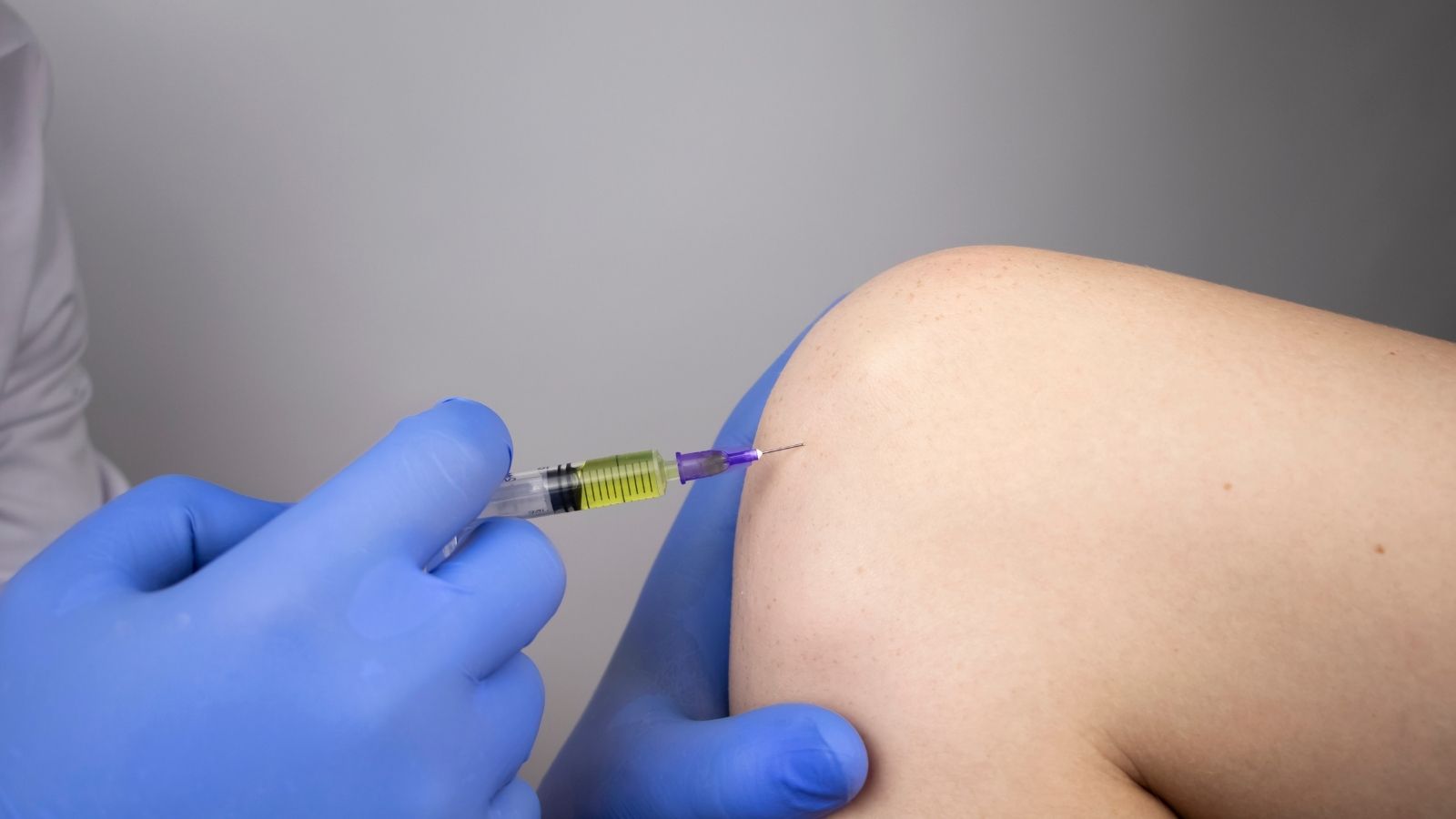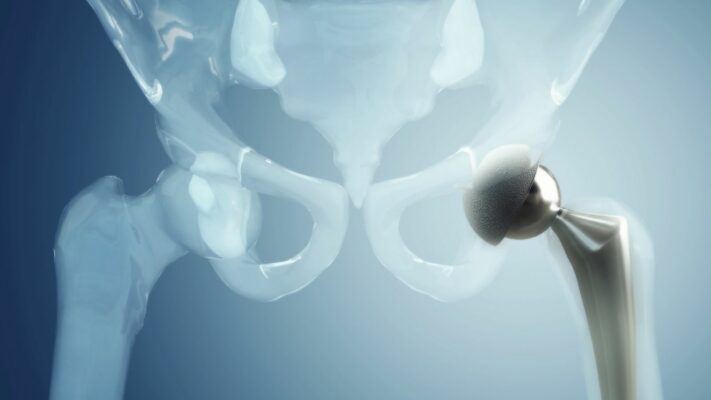Bone Marrow Aspirate Concentrate (BMAC) is an innovative application of regenerative medicine that aims to heal damaged tissues by utilizing the body’s own repair mechanisms. At the core of this method lies the collection of stem cells and growth factors naturally found in a person’s own bone marrow, which have the potential to promote healing. Through a special centrifugation process, these valuable cells are concentrated into a dense solution and then injected directly into problem areas such as osteoarthritis, cartilage damage, or tendon injuries, without adding any foreign substances. In this way, the body’s stalled natural healing process is reactivated in the targeted area.
| Treatment Name | BMAC Therapy (Bone Marrow Aspirate Concentrate) |
| Application Area | Musculoskeletal system: knee, hip, shoulder, ankle, tendon, and ligament tissues |
| Purposes of Use | Cartilage damage, osteoarthritis, osteonecrosis, tendon and ligament injuries, non-healing fractures, chronic wounds |
| Application Method | Bone marrow aspiration from the pelvic bone, centrifugation to separate stem cells, and injection into the damaged area |
| Type of Anesthesia | Local or sedation |
| Number of Sessions | Usually a single session; may be repeated in some cases |
| Recovery Process | 4–12 weeks; may be supported with physiotherapy |
| Complications | Infection, pain at the injection site, rarely allergic reactions |
| Advantages | Low immune risk as the patient’s own cells are used, alternative to surgery, potential to accelerate healing |
| Alternative Methods | PRP (Platelet Rich Plasma), SVF (Stromal Vascular Fraction), surgical interventions |
| Suitable Patient Profile | Those with early-stage joint degeneration, patients not suitable for surgery, individuals with chronic tissue damage |


Prof. Dr. Murat Demirel
Orthopedics and Traumatology Specialist
Orthopedics Specialist Prof. Dr. Murat Demirel was born in Ankara in 1974. He completed his primary education at Ankara Kavaklıdere Primary School and his secondary and high school education at Ankara Atatürk Anatolian High School. Dr. Demirel graduated from Ankara University Faculty of Medicine in 1998 and completed his residency in Orthopedics and Traumatology at Ankara Numune Training and Research Hospital, 1st Orthopedics and Traumatology Clinic, in 2004.
PhD
Ankara University Institute of Health Sciences
Specialization
Ankara Numune Training and Research Hospital, 1st Orthopedics Clinic
Medical School
Ankara University Faculty of Medicine
Yazı İçeriği
What is Bone Marrow Aspirate Concentrate and how is it obtained from our body?
You can think of Bone Marrow Aspirate Concentrate as searching for a valuable treasure. Our bone marrow, in addition to being the factory where our blood cells are produced, is also a treasure trove containing very valuable “repair stem cells.” However, like tiny specks of gold hidden in soil, these cells are scattered sparsely within the bone marrow fluid. Normally, these valuable stem cells make up less than one in a thousand of all marrow cells. On their own, they may not be strong enough to repair major damage such as osteoarthritis.
What BMAC therapy does is gather these golden specks—the repair stem cells—and other healing factors that assist them, by passing them through a special filtering and purification process. This is called “concentration.” In this way, the number of these healing cells, which are normally very scarce, is increased many times over in a single drop, resulting in a powerful and focused “repair serum.”
So how does this process work? This is the part our patients are most curious about, so let’s explain step by step. The entire process is usually completed in a single session within a few hours, and you can return to your normal life the same day.
The procedure begins by extracting a small amount of bone marrow fluid from one of the richest and most accessible areas for bone marrow: the upper back portion of the pelvic bone (known in medical terms as the “iliac crest”). Before this step, the area is completely numbed with local anesthesia. This ensures that you do not feel any pain or significant discomfort during the procedure—only mild pressure may be felt. Thanks to advances in technology, this procedure can now be performed much more comfortably with thinner and finer needles, causing minimal tissue damage, and completed in about 15–20 minutes.
The freshly collected bone marrow fluid is immediately transferred, in a completely sterile environment, to a centrifuge device equipped with special technology. This device spins the marrow at very high speeds, separating its components into layers based on their weights and densities. Just as cream rises to the top of milk, the most valuable elements for us—stem cells, platelets, and growth factors—concentrate in a specific layer during this process. Other components, such as red blood cells, which we do not need at that moment, are separated out. At the end of this process, from the initial 60–120 milliliters of fluid, approximately 5–10 milliliters of a much stronger and more concentrated healing solution, namely BMAC, is obtained.
In the final step, this valuable concentrate is injected into the damaged area—for example, into an arthritic knee joint, a torn shoulder tendon, or a non-healing bone fracture. For the success of this injection, it is critical that the solution reaches the precise target area. For this reason, the injection is usually performed under imaging guidance, such as ultrasound or fluoroscopy (real-time X-ray), with millimetric precision. This maximizes the effectiveness of the treatment and activates the body’s repair mechanisms in the targeted region.
Which healing components does Bone Marrow Aspirate Concentrate contain?
You can compare Bone Marrow Aspirate Concentrate to a specialized repair team at a construction site. Within this team are valuable members, each with different but complementary tasks. What sets this therapy apart from other methods based on just one cell type or growth factor is this rich and well-coordinated team.
The main members of this repair team are:
- Mesenchymal Stem Cells (MSCs)
- Hematopoietic Stem Cells (HSCs)
- Platelets
- Growth Factors
- Cytokines
Mesenchymal Stem Cells (MSCs): These are the “project managers” and “architects” of the team. Among the most intelligent cells in our body, these stem cells are like “wildcards”; they have the ability to transform (differentiate) into the needed tissue. For example, when they arrive at a damaged cartilage site, they say, “I must become a cartilage cell here,” and begin producing cartilage. When they arrive at a bone repair site, they turn into bone cells. But their task doesn’t end there. They also act as powerful “site supervisors.” They calm the harmful inflammation in their environment and send chemical signals such as “Come on everyone, let’s start working here!” to other repair cells, organizing and commanding the entire healing process.
Hematopoietic Stem Cells (HSCs): These cells are the “infrastructure and logistics managers” of the team. Their main role is to produce our blood cells, but in the repair site they also support the creation of new roads and pipelines—in other words, new blood vessels (angiogenesis). Remember, without trucks delivering supplies (nutrients and oxygen) to a construction site, work cannot progress. These new vessels continuously bring fresh blood, nutrients, and oxygen to the repair area, accelerating and sustaining healing.
Platelets: These are the “first aid and emergency unit” of the repair team. While their main role in blood is clotting, they are also tiny energy packages that store hundreds of different growth factors. When an injury occurs—like damage at a construction site—they are the first to arrive. They immediately stick to the damaged area and release their stored growth factors. This release both sounds the first alarm to initiate repair and sends a signal to distant stem cells: “There’s an emergency here, come quickly!”
Growth Factors and Cytokines: These are the “radio messages” and “work orders” used by the site supervisors (stem cells) and emergency unit (platelets). Each gives a specific command, triggering cell proliferation, new tissue production, vessel formation, and bone development. One says “Produce more bricks” (collagen synthesis), while another says “Open new roads” (angiogenesis). Thanks to this complex yet perfectly organized communication network, the repair process progresses correctly and in an orderly fashion. Cytokines, in particular, balance the delicate inflammation process: first initiating a controlled fire to clear damaged tissue, then extinguishing it on time to prevent excessive destruction.
How does Bone Marrow Aspirate Concentrate promote healing in the body?
This powerful repair team—Bone Marrow Aspirate Concentrate—when injected into a damaged area, does not merely suppress the symptoms temporarily like a painkiller. Instead, it addresses the root of the problem, reactivating the body’s stalled or slowed repair mechanisms on multiple fronts. This effect primarily proceeds through three main mechanisms.
First, direct tissue repair and regeneration. In osteoarthritis, for instance, the main issue is the worn cartilage tissue, and repairing this is the key target. Cartilage has very limited self-renewal capacity. The “architect” stem cells within BMAC can directly transform into cartilage cells (chondrocytes) at the damaged site, laying the foundation for new and healthy cartilage. The growth factors it contains also support this process by increasing the production of materials such as collagen, the main structural component of cartilage, thereby helping restore the integrity and durability of the cartilage.
Second, controlling harmful inflammation (anti-inflammatory effect). In chronic conditions such as osteoarthritis, persistent and uncontrolled inflammation is the main reason pain, swelling, and tissue damage continue. This inflammation is like a low-level fire constantly burning inside the joint, gradually wearing everything down. Bone Marrow Aspirate Concentrate, thanks to the smart “mediator” molecules (cytokines) it contains, extinguishes this harmful fire. It suppresses the production of chemicals that destroy cartilage. This not only reduces the patient’s pain and eases the joint but also slows further cartilage damage. This strong anti-inflammatory effect also explains why patients often feel significant relief within the first weeks after injection.
Third, and perhaps most importantly, is activating the body’s own healing potential (signaling role). Recent research shows that the true power of injected stem cells may not be limited to their ability to transform into new tissue themselves. These cells also act as “command centers” that send powerful chemical signals to other repair cells and molecules located throughout the body: “A major repair project has started—everyone come help!” In other words, BMAC injection serves as a wake-up call for the body’s own dormant repair army. This mechanism, also known as the “paracrine effect,” partly explains why even an injection with a relatively small number of stem cells can show clinically significant and long-lasting effects. The treatment does not remain just a simple injection but triggers a holistic healing response from the body.
Contact us for detailed information and an appointment!
In orthopedics, for which conditions is Bone Marrow Aspirate Concentrate used?
Thanks to its rich healing cells, Bone Marrow Aspirate Concentrate has a wide range of potential uses in the field of orthopedics. However, it is important to know that this treatment is not a magical cure for every problem and may not be suitable for every patient. Suitability is determined after a detailed evaluation of the patient’s condition, the stage of the disease, and the physician’s assessment.
The main orthopedic conditions where BMAC therapy is most frequently and successfully used include:
- Knee osteoarthritis (gonarthrosis)
- Hip osteoarthritis (coxarthrosis)
- Shoulder osteoarthritis and impingement syndromes
- Ankle osteoarthritis
- Traumatic cartilage injuries (osteochondral defects)
- Cartilage lesions of the ankle talus bone
- Non-healing or delayed-healing bone fractures (pseudoarthrosis)
- Bone blood supply disorders (avascular necrosis – osteonecrosis)
- Rotator cuff tendon tears of the shoulder
- Chronic problems of the Achilles tendon (tendinopathy)
- Tennis elbow and golfer’s elbow (epicondylitis) in the elbow
- Tendon injuries around the hip joint
- As support in the repair of certain meniscus tears
- Degeneration of spinal discs (disc degeneration)
- To support healing after major surgical repairs (e.g., ligament or tendon repair).
How effective is Bone Marrow Aspirate Concentrate therapy in knee osteoarthritis?
Knee osteoarthritis (osteoarthritis) is perhaps the most researched, most commonly applied, and most promising area for BMAC therapy. In tackling this chronic condition, which reduces the quality of life for millions of people worldwide, BMAC has opened a new door of hope for many patients who do not respond to conventional treatments.
Scientific studies and clinical experiences show that BMAC therapy has significant potential in patients with knee osteoarthritis to reduce pain and improve function. Patients often notice a reduction in pain, increased walking distance, improved ability to climb stairs, and an overall improvement in quality of life within the first few weeks to months after the injection. Many studies have observed these positive effects lasting up to 1 year, and in some groups of patients, even up to 2 years.
It is important to emphasize one point here. The main goal of BMAC therapy in knee osteoarthritis is not to “completely recreate cartilage” or to “reset the joint.” Such an expectation would be unrealistic. The actual aim of the treatment is to change the biological environment within the joint, suppress harmful inflammation, protect the remaining healthy cartilage tissue, potentially trigger small repairs, and ultimately enable the patient to live a more functional and pain-free life. In other words, the aim is to extend the life of the joint and postpone the need for a total knee replacement, which is a major and irreversible surgery, as much as possible.
The success of the treatment may not be the same for every patient. Some factors influence the outcome:
Stage of the Disease: Treatment usually gives the best results when applied in the early and moderate stages (mild and moderate osteoarthritis). In advanced cases where cartilage damage is severe and bones rub directly against each other, the chance of success is lower.
Patient’s Weight: A high body mass index (BMI), in other words, excess weight, increases the load on the knee joints, contributing both to the progression of the disease and reducing the effectiveness of the treatment.
Joint Alignment: If there is a significant deformity in the legs (bowlegs “O” or knock knees “X”), the effect of a biological treatment without correcting this mechanical problem will be limited.
Age and Activity Level of the Patient: Younger and more active patients usually have a higher healing potential.
Compliance with Rehabilitation: Adherence to physiotherapy and rehabilitation after the injection is at least as important for the success of the treatment as the injection itself.
Are there risks or side effects of Bone Marrow Aspirate Concentrate therapy?
As with any procedure involving needles, BMAC therapy also carries potential risks and side effects. However, one of the biggest advantages of this treatment is that since the patient’s own blood and bone marrow are used, risks such as allergic reactions or rejection are eliminated. It is generally considered a very safe procedure, and most side effects encountered are mild and temporary.
The most common possible side effects generally occur in two areas:
At the Bone Marrow Aspiration Site:
- Mild pain or ache lasting a few days
- Tenderness
- Localized bruising
- Feeling of fullness
At the Injected Joint:
- Temporary increase in pain during the first 24–72 hours
- Swelling and fullness in the joint
- Mild redness
- Temporary sensitivity during movement
These symptoms are usually a sign of the body’s natural inflammatory response to the treatment and the start of the healing process. They generally resolve on their own within a few days and can be easily controlled with simple painkillers or ice application.
There are also rarer but important risks to be aware of:
- Infection
- Bleeding
- Nerve or vascular injury
- Reaction to local anesthesia
These risks are minimized when the procedure is performed under completely sterile conditions, by an experienced physician, and with imaging guidance.
For whom is Bone Marrow Aspirate Concentrate therapy a suitable option?
The success of BMAC therapy is critically dependent on proper patient selection. This treatment is not a suitable solution for every knee or shoulder pain. After a detailed examination and radiological evaluation, the physician decides whether the patient is a good candidate for this therapy.
In general, patients considered suitable for BMAC therapy share some common characteristics:
- Those with mild to moderate osteoarthritis
- Patients who are still in early stages for surgery or wish to delay surgery
- Those who have not benefited sufficiently from physiotherapy, medication, or other injection treatments
- Young and active individuals with localized cartilage damage after trauma
- Those whose quality of life is reduced by chronic tendon injuries (e.g., tennis elbow, Achilles tendinopathy)
- Patients in good overall health without contraindications to anesthesia
- Those with realistic expectations and willingness to comply with post-treatment rehabilitation
On the other hand, BMAC therapy is strictly not recommended in certain cases. The main contraindications are:
- Presence of active infection in the treatment area or anywhere in the body
- History of blood or bone marrow cancers (such as leukemia, lymphoma, multiple myeloma)
- Current or recent history of other cancers
- Bleeding or clotting disorders
- Uncontrolled severe systemic diseases (diabetes, rheumatoid arthritis, etc.)
- Pregnancy or breastfeeding period
What is the recovery process after Bone Marrow Aspirate Concentrate injection?
BMAC injection is not a magic wand; healing is a process, and the patient’s active participation and patience are very important for success. The post-injection rehabilitation program is one of the most critical and inseparable parts of the treatment.
The recovery process is usually divided into specific phases:
First 48–72 Hours (Acute Inflammatory Phase): This is the most sensitive period, when the body gives its first response to the treatment.
What Should Be Done:
- Rest the treated joint
- If possible, keep the joint elevated above heart level
- Apply ice to the area 3–4 times a day for 15–20 minutes
- Use simple painkillers recommended by your doctor (usually paracetamol-based)
What Should Be Avoided:
Non-steroidal anti-inflammatory drugs (NSAIDs) (Ibuprofen, Naproxen, Diclofenac, etc.) should be avoided, as these suppress the natural healing inflammation we are trying to initiate.
- Applying heat (hot water bottle, thermal baths, sauna, etc.)
- Alcohol consumption
- Activities that put full weight on the joint
Day 2 to Week 2 (Early Repair Phase): The goal is to begin gentle movement while protecting the joint.
What Should Be Done:
- Begin gentle range-of-motion exercises as shown by your doctor or physiotherapist
- If a weight-bearing joint was treated, continue using crutches
- Short, slow-paced walks to increase blood circulation (without loading the joint)
What Should Be Avoided:
- Standing or walking for long periods
- Climbing stairs
- Sudden or strenuous movements
Week 2 to Week 6 (Intermediate Repair and Strengthening Phase): During this period, gradual strengthening exercises are introduced.
What Should Be Done:
- Begin a structured physiotherapy program
- Low-resistance, non-weight-bearing exercises (such as swimming, water-based exercises, non-resistive cycling)
- Controlled exercises to increase muscle strength and flexibility
What Should Be Avoided:
- High-impact activities such as running, jumping, or hopping
- Heavy lifting
- Squatting or deep knee bending
After Week 6 (Late Phase and Return to Function): As healing progresses, a gradual return to normal activities begins.
What Should Be Done:
- Increase the intensity and variety of exercises under physiotherapist supervision
- Begin functional exercises specific to certain sports or activities
Important Reminders:
- Pain is always a stop signal. Do not continue exercising through pain.
- Full recovery and the final effect of treatment may take 3 to 6 months, or sometimes longer.
Being patient throughout this process and giving your body time to repair itself will maximize the benefits of the treatment.
Contact us for detailed information and an appointment!
Frequently Asked Questions
What is BMAC (Bone Marrow Aspirate Concentrate)?
BMAC is a treatment method obtained by taking bone marrow fluid with a special needle and enriching it in the laboratory through centrifugation to increase its stem cells and growth factors. The injected concentrate supports tissue healing and regeneration.
For which conditions is BMAC therapy applied?
BMAC is used especially in cases such as joint cartilage damage, meniscus tear, osteoarthritis, tendon and ligament injuries, avascular necrosis, bone healing problems, and some sports injuries. It can also be effective in cases of delayed bone healing.
How is BMAC therapy applied?
First, bone marrow fluid is taken under local anesthesia from a suitable area such as the pelvic bone. The fluid is centrifuged in the laboratory, and the stem cell-rich portion is separated. The obtained BMAC is then injected into the damaged tissue under ultrasound or arthroscopy guidance.
What are the advantages of BMAC therapy?
It accelerates the body’s natural healing process using the patient’s own cells. It can be applied without surgery or with minimal invasiveness. The risk of side effects and allergies is very low. The recovery time can be shortened, and the natural structure of the tissue is preserved.
What is the recovery process after BMAC therapy?
Patients can usually return home the same day after treatment. Mild pain or swelling may occur in the first few days. Full recovery and visible effects may take 2–3 months. Healing is supported with physiotherapy and exercises recommended by the doctor.
Are there any risks of BMAC therapy?
As with any medical procedure, there are low risks such as infection, bleeding, or pain at the needle site. Since stem cells are taken from the patient’s own body, immune reactions and serious side effects are rare.
What is the difference between BMAC and PRP?
PRP (Platelet Rich Plasma) is obtained from blood, while BMAC is obtained from bone marrow and contains many more stem cells. PRP is generally preferred for more superficial tissue damage, while BMAC is preferred for deeper tissue, cartilage, and bone repairs.
Who is not suitable for BMAC?
BMAC therapy is not recommended for patients with active infections, blood disorders, or a history of cancer, as well as for pregnant or breastfeeding women. The success rate is also lower in patients with severe osteoporosis.
What determines the success of BMAC therapy?
The patient’s age, overall health condition, the location and size of the damage, the timing of the application, and proper rehabilitation afterward are the key factors for success. Better results are achieved in early stages and in suitable cases.
What should be considered after BMAC therapy?
After treatment, patients should avoid heavy sports and excessive strain for a period. Controlled exercise and physiotherapy should be followed as recommended by the doctor. Attending follow-up appointments is also an important part of the recovery process.




